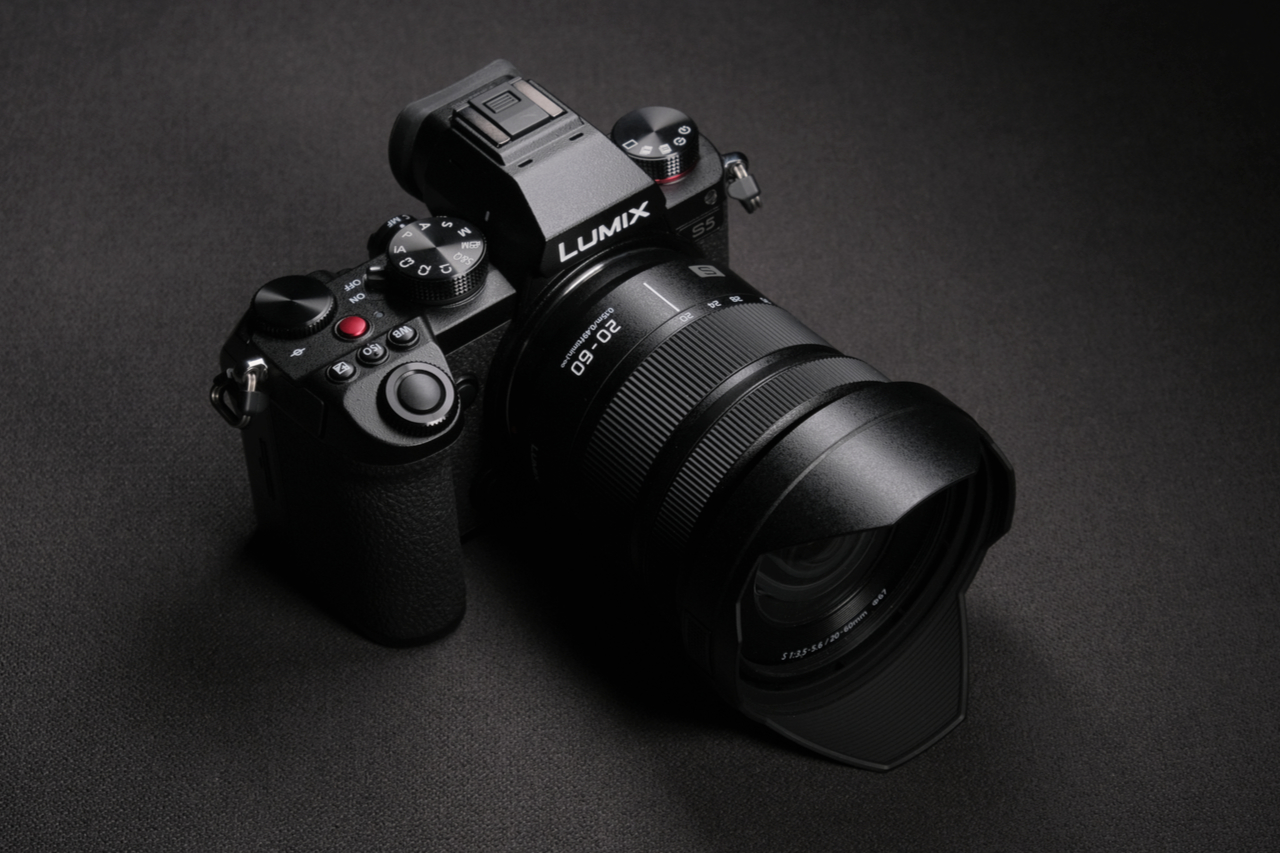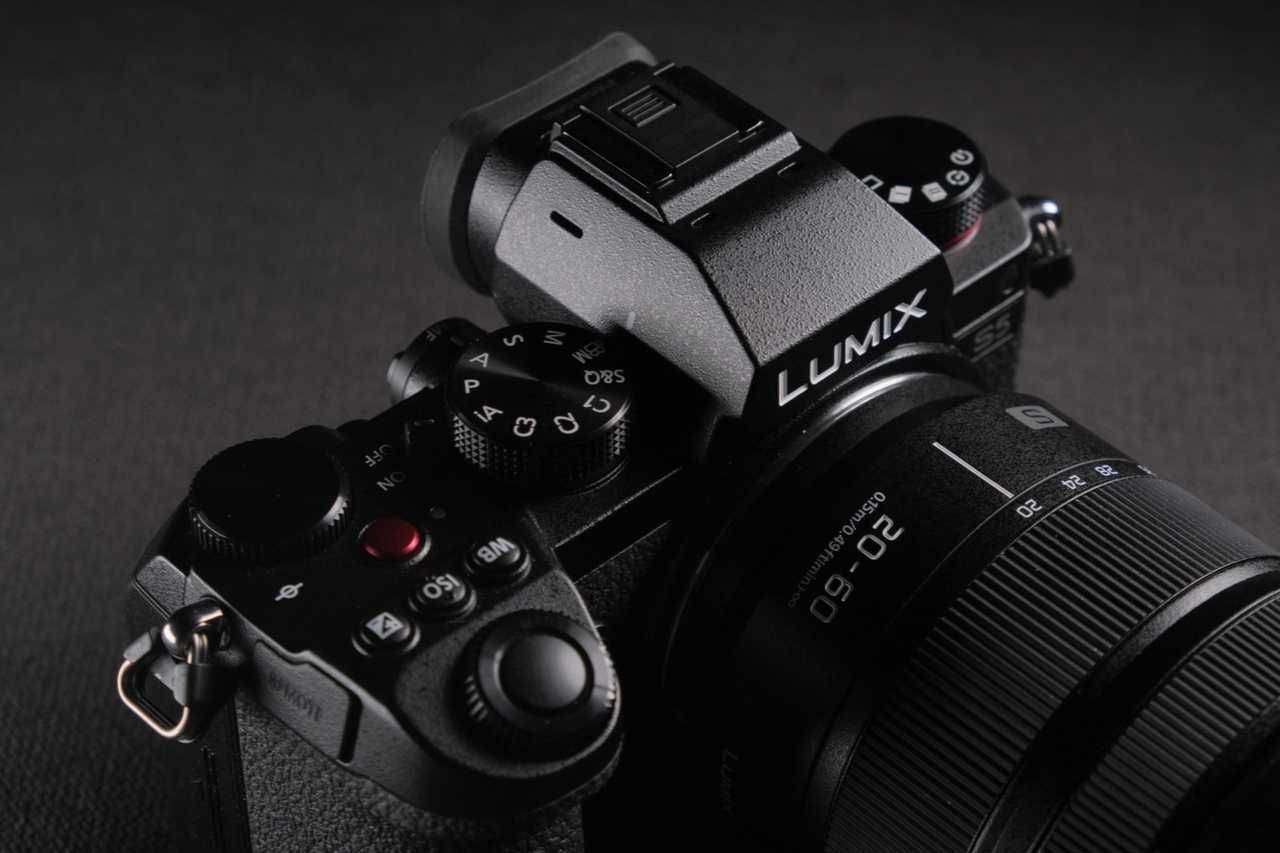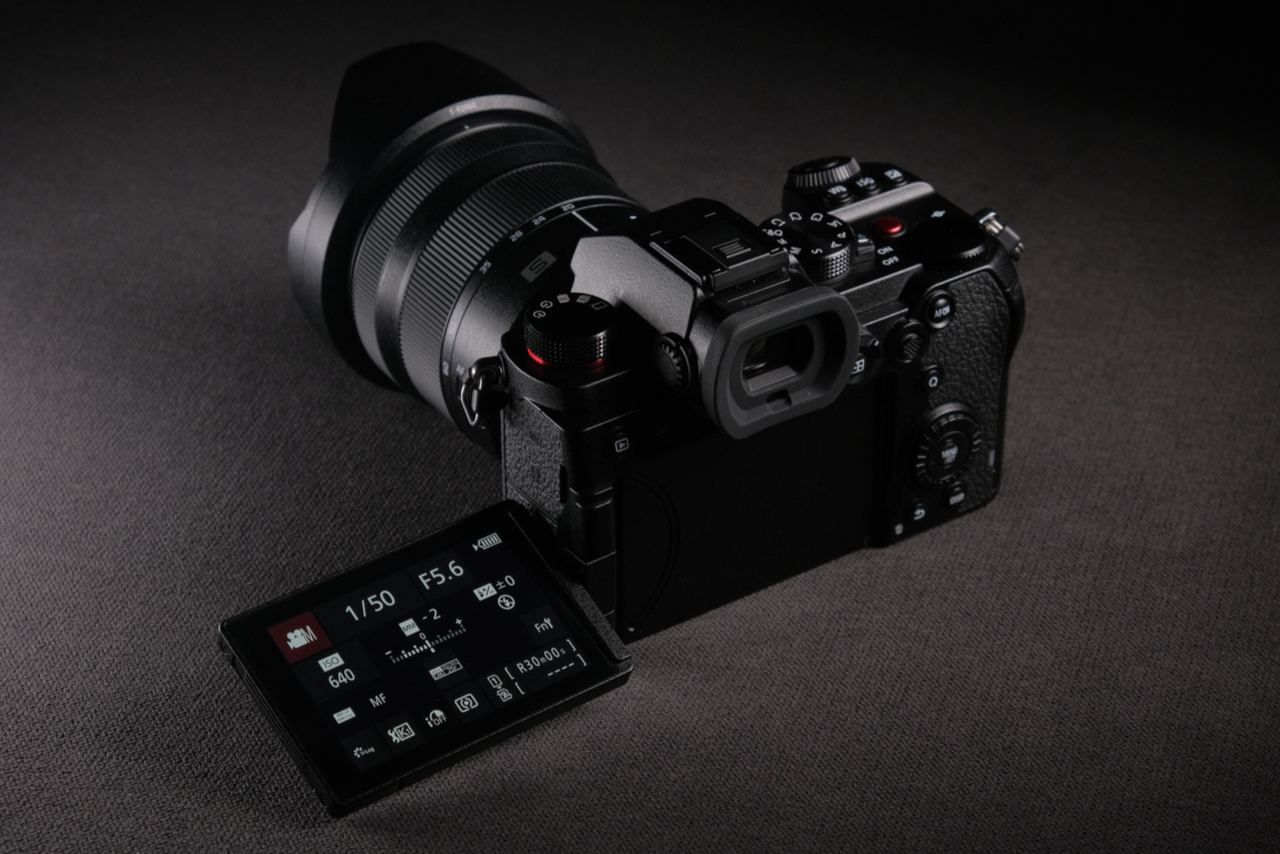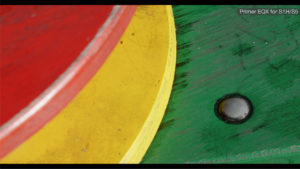Panasonic S5 – mini review

Introduction
With the evolution of GH series, Panasonic has shown it takes professional video in compact camera segment seriously. GH5 series took the learned from previous generations and user feedback and brought it to the next level. Broadcast quality codec, features, improved processing and next-gen high quality sensors made GH5 series widely capable creative tool. We used GHS5 on a few large projects as additional camera and it performed very well.
Expanding onto full frame with S series it was very interesting to see what will Panasonic achieve next. Having limitations set at “high” based on previous experiences, we awaited what we’ll end up seeing..and when we first got S1H series on analysis…I was shocked. Having tested it in our lab and next to a couple of full-fledged cinema cameras in higher segment (Arri Mini LF included) it was pretty clear that S1H had some serious performance…. It came VERY close. Considering the target segment and pricing…this is outstanding achievement. So…moving onto new S5 with even lower pricing, the question which arose was “will it be able to keep that performance”.
With constant improvements in sensor tech, processing, colour science etc, and technological insatiability in fast-paced, camera-saturated market, one needs to stop for a moment to smell the roses.
So…we did. And it was well worth it.
Overall experience
At first direct experience it became apparent that S5 sits in the hand nicely with robust feel and impression of build quality. EVF is excellent, large OLED with deep contrast and practically the same resolution and feel as in Fuji T3/T4 series. Which is great. S1H EVF does go a step further in EVF resolution but the difference is subtle. No worries with this one, you will see contrast, detail and focus nicely.
Body is noticeably smaller in size than S1H (also comparable to Fuji T3/T4) which makes S5 much more compact, practical and easier to carry around all day than S1H. This is also highly beneficial for gimbal users in both size and weight factors. The difference WILL matter.

Recording image quality goes a wide range. We don’t test lower quality codecs at all, so I just went with the highest on board, which is 150Mbs 10bit 4:2:2. Where image quality is a factor I always suggest usage of external recorder. S5 lacks the 400 Mb/s Intra codec so externally recorded intra-frame video makes the footage more post-friendly. For event coverage, youtubers, vloggers, tech reviews, and general info material 10 bit 4:2:2 internal AVC long GOP 150 Mb/s codec serves the purpose well, with comparable level of image detail, while saving card/disk space. Next step up in quality would be 10 bit 4:2:2 Prores or Avid DNx on external recorder, the next one Prores Raw. The last one is cinema grade, least compressed with full colour resolution.
As seen on multiple posts online and some misleading tests, people are often not aware just how much have cameras improved in recent years. There is a tendency of dissatisfaction with particular features while missing the advantages, which happens with many new cameras. With the introduction of Panasonic S Series, using latest generation of full frame sensors, imaging performance has come very close to higher end cameras, making them usable as additional camera for serious projects and when used as main camera capable of achieving high quality “cinematic” image performance. The depth, the DR, the detail, the colour feel.
Panasonic S5 benefits:
- Excellent dynamic range, highlight handling especially
- Natural colour feel
- High ISO performance beats some much more expensive professional cameras
- High quality stills/Video usage
- Size/performance
- Price/performance
- 10 bit 4:2:2 out, RAW out

Dynamic range
In comparative tests to other cameras in the segment, in higher segments and also to high-end full frame cinema camera like Arri Mini LF, we have found excellent dynamic range and especially highlight performance, which is very close to Arri. In side by side overexposure test sensor holds max signal unbelievably well. In DR and comparative tests we initially used S1H and after testing S5 there are no signs showing any difference in dynamic range.
We cannot display much of our current tests publicly but here is a snippet of Arri Mini LF and S1H with 5 stops+ overexposed, pulled down and our Primers applied to each to stabilize many things and unify colour response. As you can see…S1H is not far behind:

Sensitivity
S1 sensor with second gain at ISO4000 equivalent does a great job in lower light scenarios. For max push you will have to look elsewhere, we do not focus on this, our priority is image quality and native ISO performance. Note that high gain “ISO” performance varies depending on light quality so a single recommendation for highest push is not very sensible. We tested S5 and S1H with lowest quality light i.e. street lights and ISO4000 works nicely. Noise is still there but tolerable and easily cleaned with software NR with minimal loss of detail. Pushing the image further enhances noise noticeably and tolerance off this is subjective. In daylight exteriors with sunlight drifting noise performance is likely better due to superior light source and more saturated blue channel.
RECOMMENDATION: for best results in low light scenarios use external recorder because compression algorithms on top of fluctuating noise texture further deteriorate the image, reduce detail and original organic texture. Noise texture/forms you see with highly compressed codec is not just noise but compression artifacts on top of noise, so micro “dust” like noise texture turns into compression blobs. On board NR usage depends on usage and personal criteria, it will also soften the image and reduce image detail. If job and material purpose do not necessitate finer results on board NR helps to speed up things but software NR can be better controlled with finer tweaking.
Gallery
Few frame grabs from S5 video shot with on board 150 10 bit 4:2:2 codec. Typically these go with standard camera maker’s LUTs but we aim for superior performance so we use our Primers to display what is possible with this camera.
Limitations
- Long GOP codec – not so much an issue in image detail as in post workflow, more hardware intensive
- Micro HDMI makes external recorder usage more fiddly & risky
- Flip out screen is limiting HDMI usage (nothing specific to S5)
- Rolling shutter – works okay for slow pans, even better in S35 crop (Sensor limitation, same with other camera brands, nothing specific to Panasonic S series)
- 17^3 LUT support is not as precise as 33^3 (although usable for main V-Log gamma assist to get the exposure feel)
Differences between GH5 series and S5:
GH5/S upper hand :
- Long GOP codec – not so much an issue in image detail as in post workflow, more hardware intensive
- Micro HDMI makes external recorder usage more fiddly & risky
- Flip out screen is limiting HDMI usage (nothing specific to S5)
- Rolling shutter – works okay for slow pans, even better in S35 crop (Sensor limitation, same with other camera brands, nothing specific to Panasonic S series)
- 17^3 LUT support is not as precise as 33^3 (although usable for main V-Log gamma assist to get the exposure feel)
S5 upper hand :
- Dynamic range
- Gamut range
- Highlight performance and transition to extremes (over/under/peak saturation)
- Sensitivity
- Overall colour performance
- 6K/24Mp stills
- Full frame look
Differences between S1H and S5
S1H has OLPF, full size HDMI, TC, superior cooling for longer takes
S5 upper hand: size & weight, detail for photography due to lack of OLPF
Usage
Suitable for: Mixed stills and video usage in one camera, music videos, promos, nature & wildlife, real estate, weddings, cooking, event coverage (haven’t tested long takes, S1H should be a better choice), short films (with special care for micro HDMI out)
Not the best choice for: fast sport videos due to AF type, fast panning due to rolling shutter, larger film/TV sets with standardized workflows and set of technical parameters (that is a job for S1H)
Who is it for:
1) Shooters who want to step up from GH5/GH5S
2) Shooters who want another camera next to GH5/GH5S
3) Shooters who need one powerful multi-purpose camera for stills and video and do not need more professional features of S1H
4) Shooters who want more gimbal-friendly companion to their S1H
Usage with EVA
Use EVA for more dynamic shots due to better rolling shutter (same as with S1 & S1H) and for CUs due to EVA OLPF and softer skin appearance. Use S5 for wide shots, establishing and less motion. For matching and look unification we make Primers.
Usage with GH series
Use S5 for shots where DR and colour is priority, use GH5/S for more motion. For matching and colour unification we make Primers.
Similar stills/video cameras, most factors considered
- Canon R6
- Nikon Z6
Suggestions for next generations of cameras
1) Introduction of 12 bit 444 Intra on board recording (600-800 Mbs)
2) 33^3 precision LUT support
3) Faster sensor readout (sensor maker dependent)
4) Full size HDMI or SDI out – or SDI adapter accessory
5) Boxed FF camera like BGH1 but with dedicated built-in screen (like S1H top screen for camera settings but on the side)
Conclusion
In the context of overall performance and usage for stills and video S5 currently seems as excellent bang for buck, with imaging performance and look in cinematography reaching into higher segments.
For independent productions with no need for S1H features this is a very, very good choice and S5 users are getting great image quality.
For sets with B/C/D cams S1H is a better choice due to TC, Intra codec and OLPF, making the footage smoother for cinema screen and reducing the risk of moirée.
In short, S5 is a very powerful and high quality all-around full-frame hybrid stills/video camera with 10 bit on board recording and raw out option – meeting broadcast and cinema* levels of quality criteria and excellent buy.
Great job, Panasonic team.
* – when used wih raw recording





